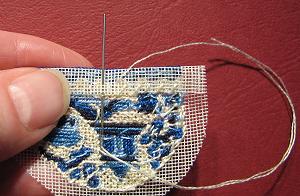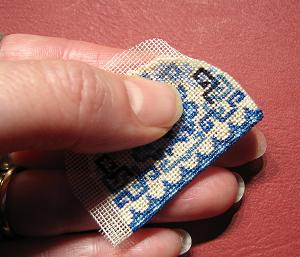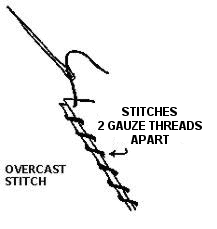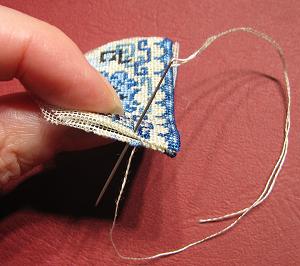How to make a dollshouse needlepoint teacosy
These tutorials were originally written to help people who had bought my dollhouse needlepoint kits – they show you how to do the stitching and assemble each type of kit. In November 2024 I retired, so these pages are now a ‘legacy archive’ only. I NO LONGER SELL THESE KITS, so please do not contact me asking where you can buy them! I plan to keep these tutorials available until at least the end of 2026, so that people who bought kits but haven’t made them up yet have a while to use the tutorials to complete their kits 🙂
These projects are quick and fun to make. Every doll’s house should have at least one teacosy!

These are a good introduction to stitching on silk gauze, as the designs are quite simple, and the items can be finished in just a few evenings.

These Janet Granger miniature teacosy kits contain a piece of 32 count silk gauze, Anchor stranded cotton (use one strand), clear instructions, a colour block chart to count the design from, and a suitable needle.
This tutorial features the ‘Willow Pattern’ doll’s house teacosy design in the step-by-step photos.
These teacosy kits are to be worked on 32 count silk gauze, using tent stitch for the detail, and basketweave stitch for the background. See the NEEDLEPOINT STITCHES Tutorial if you have not done these stitches before – they are very simple to do.

Mount the silk gauze into a card mount, as described in the SILK GAUZE Tutorial. This will make it much easier to work stitches with an even tension, and also makes your miniature stitching quicker to do!
Start stitching from the centre of the design, as described in the tutorial NEEDLEPOINT STITCHES LINK mentioned above, working outwards. When all the detail is complete, fill in the background.
IMPORTANT NOTE: The teacosy designs have a front panel and a back panel, worked separately and then stitched together. One large piece of silk gauze is included in the kit. Make sure that you leave a gap of unworked silk gauze of at least half an inch between the two panels when stitching the designs (as shown on the chart), to allow for a hem allowance on each panel when making up.

When all the stitching is complete, trim the unworked gauze around each panel to a quarter of an inch all the way round.

As you fold back the quarter inch seam allowance of bare gauze along the base of each piece of the teacosy, make sure that the fold lies right along the centre of the bottom row of stitches, so that no bare silk gauze is left showing from the front. Finger press the fold to set the crease.

Take a length of leftover stranded cotton, in the same shade as the background of the teacosy, so that the stitches will blend in as much as possible. Using a single strand, secure the end of a length about 12 inches long by knotting the cotton and making two back stitches in the seam allowance at one side. Slipstitch the hem edge lightly to the reverse of the needlepoint stitches, making sure that you do not pierce the front of your work while you do this.

When both front and back have been hemmed along the baseline, fold back the seam allowance of the remaining edges of the teacosy, and finger press to set the fold. Work slowly around curved edges, easing the seam allowance in place.

Then place the two halves of the teacosy together, wrong sides facing. With a new length of cotton, stitch the two halves together using overcast stitch, as illustrated at LEFT.

Take the needle through the two layers of gauze through the outermost line of needlepoint stitches each time, so that no bare gauze shows when you have finished. Make a stitch every two gauze threads along the seam. Pull each stitch tightly as you finish making it. Make sure that you leave an opening at the bottom for the teapot to fit in! When you have finished stitching this joining seam of the teacosy, finish off the length of cotton securely by working a couple of back stitches along the seamline, pulling the cotton taut, and cutting it very closely – this way, the end of the cotton will ‘disappear’ into the seam.
Your doll’s house teacosy is now finished, and ready to grace your doll’s house or room setting.
